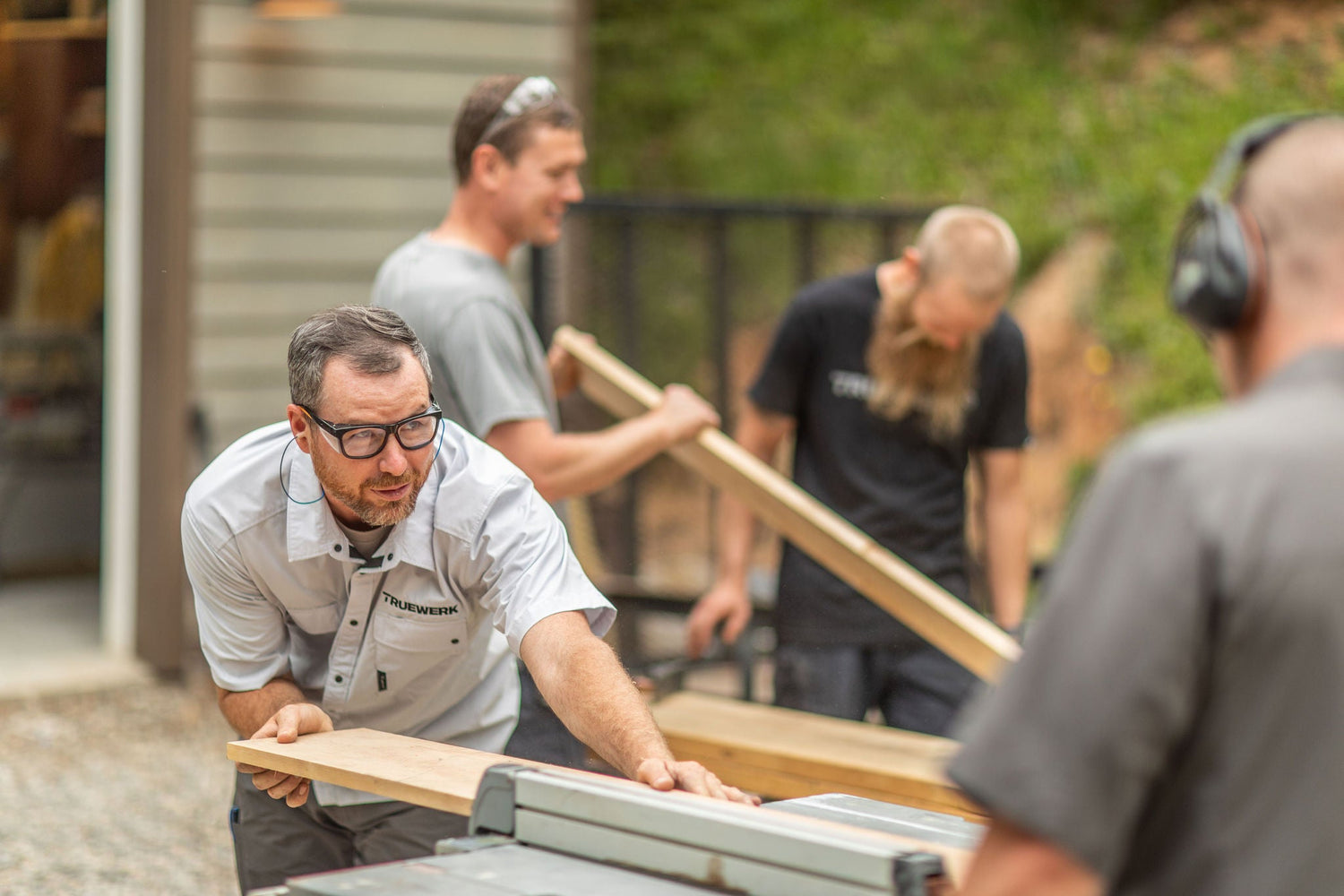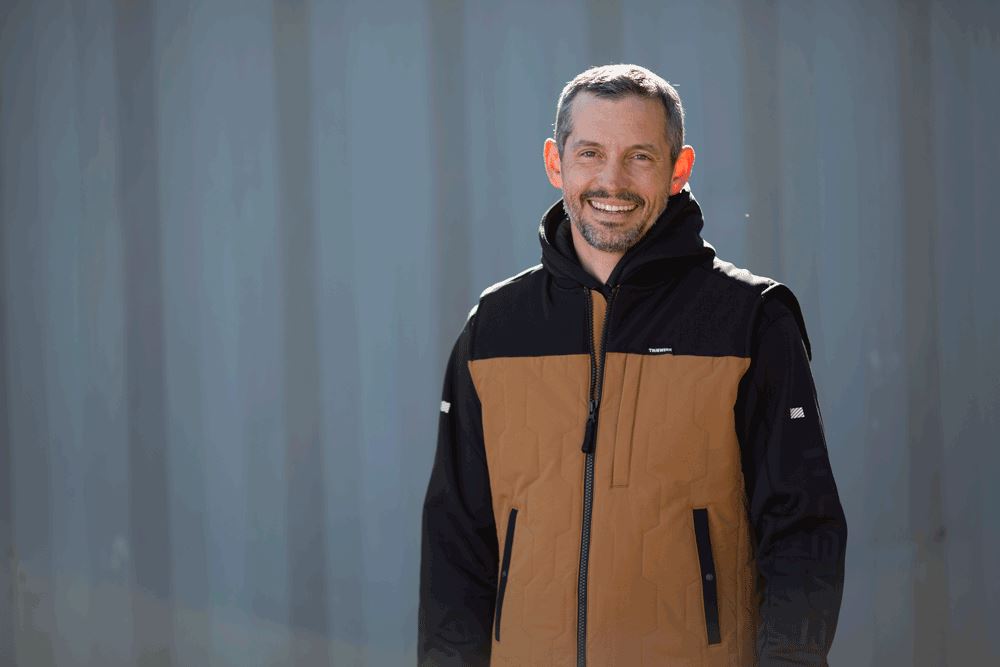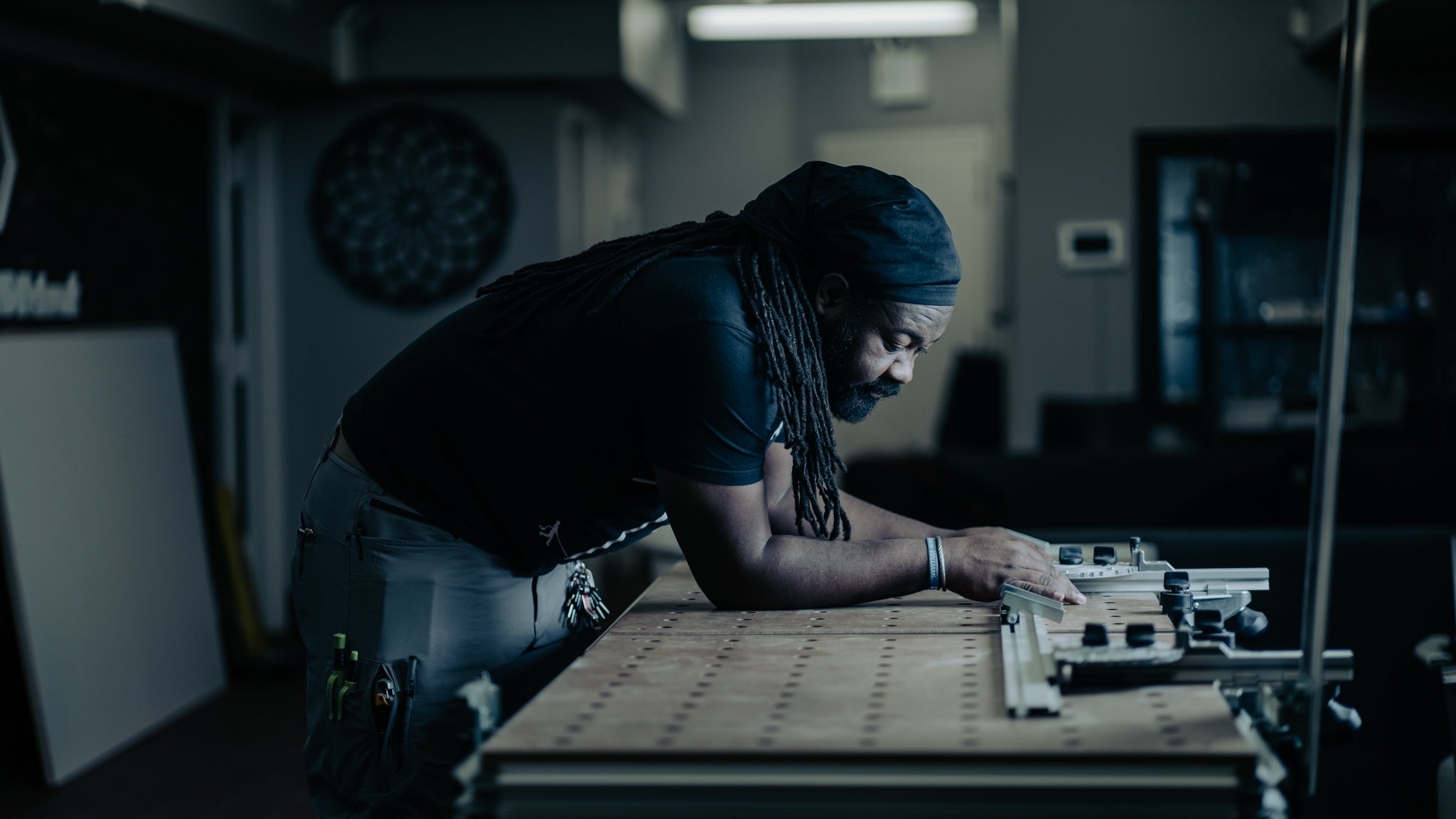James Lucas is wearing a yellow hard hat, a tool belt and a hi-vis vest with a smile that seems like it will never leave his face. His knowledge of construction trucks is extensive -- he can identify a loader, an excavator, bulldozer, cement mixer and crane with just a quick glance.
Lucas, my nephew, is barely four-years-old. His joy about anything having to do with the trade industry started as soon as he was old enough to point. He’s dressed up in workwear at the local children’s museum, Playstreet, and can continue the fun at home with his Fisher-Price tool set (one of the brand’s best selling toys).
Whether it’s from a picture book or walking down the toy aisle, it’s apparent that the trade industry -- whether we realize at the time that’s what it is or not -- has a big presence in the eyes of children.
Then, as we grow taller and progress from elementary school to high school, we see and hear less signs of skilled trades like construction, sometimes not even seeing this path at all as an option for the future when we are near graduation and adulthood.
Why? And, how can we make sure future generations know that a career in the trade industry is not only a viable one, but a great one?
We chatted with a high school counselor to hear his insight on why this problem exists, learn more about a new school model that is changing how students think about their future and ways professionals in the industry can inspire new generations.
MODELS AND METRICS THAT NEED TO BE MODERNIZED
Public high schools often measure success and earn their rankings based on state test scores, SAT or ACT (college admissions tests) scores, college acceptance rates of their students and the breadth of their college curriculum offerings like AP classes.
So, based on these metrics for success, it should come as no surprise that most high school teachers and administrators w focus on encouraging students to pursue a 4-year degree.
The more students that score well on their SAT/ACTs and get accepted into colleges, the better the teachers and school look. Naturally, schools want to look the best. Can we blame them?
Ryan Seely, a guidance counselor with nearly 15 years under his belt, tells us sometimes in a traditional schooling environment, the kids who aren’t the best standardized test takers or the ones that don’t have plans for college might be brushed aside unintentionally with no clear direction for their future.
“If you were to shut the door and privately ask most counselors if every kid should go to college they would say no, but they’d also say ‘I’m under a pressure to push them that direction,’” Seely explains.
Seely’s big ‘aha moment’ is thanks to Ernesto, a former student at Grand View High School, who came to him with hopes of becoming an electrician.
“My first thought was to send him to college for an electrical engineering degree. Then I paused and realized I needed to figure out the clearest path for Ernesto to become exactly what he knew he wanted to be. I made some calls and went to some electrician companies to sit down and ask them what advice I should give my kids asking about trade careers,” said Seely.
It was the first time the companies had ever had someone from a high school inquire about it and show interest in helping future generations of electricians.
Seely figured out how to get Ernesto an apprenticeship after graduation. Ernesto became more invested in school, trying to get better at math because he knew he’d need it for his career - not his admissions into a college.
Seely dove into expanding his role on Continuing Trades Education (CTE) with Ernesto as his inspiration. He knew he could be a really effective counselor if he could figure out how to get kids into programs to prepare them for the futures they actually want.
“It was a sham that we weren’t able to coach kids on this kind of stuff. The fact that our team didn’t already know how to help kids get into those types of careers showed me that we had work to do, we needed to learn other things.”
Parents and team members met Seely with unexpected enthusiasm.
“I understand that the general sentiment in our culture is that you go to high school and then you go to college. I’m working on trying to bend that culture,” Seely said.
The measure of success shouldn’t be based on test scores and acceptance rates. Each student is different and each student should have the opportunity to personalize what their path looks like. If we get more granular in how we determine success, counselors can be absolved from the pressure of pushing college and focus on the individual.
BENDING THE NORM FOR THE BETTER
Seely is now a counselor with Cherry Creek Innovation Campus (CCIC), a school that offers CTE courses and provides direct connections to careers in the trades. Here, kids are more comfortable talking about not going to college. They’re learning in spaces that mimic a job site or an auto shop and other real-world environments.
CCIC isn’t alone in their approach -- in the last ten years or so, more and more schools like theirs are popping up across the nation. These high schools offer opportunities for students to personalize his or her education based on their career interests.
For example, students that choose courses in construction will have the opportunity to learn a set of technical and employability skills through hands-on projects like building a tiny home. They’ll leave high school with the industry certifications they need to start well-paying and fulfulling careers.
“It’s an area of massive opportunity for kids. Skills are the new currency of our economy,” said Seely.
The Department of Education does recognize that the skills gap is no joke which is why they issued official guidance for high schools to implement CTE courses. In 2018, Congress even reauthorized the Strengthening Career and Technical Education Act for the 21st Century (also referred to as Perkins V), the federal legislation that supports CTE programs and whose purpose is to close the skills gap.
Even with this federal support, Seely explains parents are still reluctant to encourage something other than college.
“The only way I’m able to overcome that reluctance is to be able to speak about earning power. I can’t just say the trades are great, but if I say there’s an 80,000 electrician shortage in America then now it starts to mean something. If I can give them numbers of the average salary after two years as an apprenticeship vs. the average salary right out of college, people start listening,” said Seely.
Seely and his colleagues are focused on shifting their curriculum to provide experiential learning opportunities including shadowing, internships, apprenticeships, visiting job sites. Public education nationwide is slowly shifting to reflect this too.
WHY ANY OF THIS MATTERS
The schools can’t do it on their own. They need businesses to step up and help provide students experiential learning and exposure to the trades.Whether it’s sponsoring scholarships that help students purchase tools rather than tuition or promoting apprenticeship opportunities to local schools.
That’s where all of us come in. Ever hear that saying, “be the change you want to see in the world”? Yeah, yeah, us too, but before you roll your eyes...
We can’t expect future generations to suddenly have newfound courage to do the unconventional - choose trade school or apprenticeships over college - on their own. We have to show up. However we can.
Contact your local schools. Ask what kind of CTE courses they’re offering, find out how you can help even if it’s just providing insight on new trends in the industry, like how virtual reality is improving job site management.
Tell your educators what you’re looking for in future crew members. Tell them what skills will help prepare students interested in the trade industry. In the end, if our high schools can start providing students with industry certifications and training, it will save businesses time and money.
Tap into social media too. That’s where the future of the skilled trades lives. Show off your job site from start to finish, show off your lifestyle. Educate people on the problem-solving and creativity it takes to do your job. Help those watching understand that the modern trade industry is a community with camaraderie, skill and opportunity.







